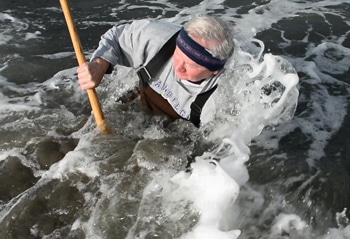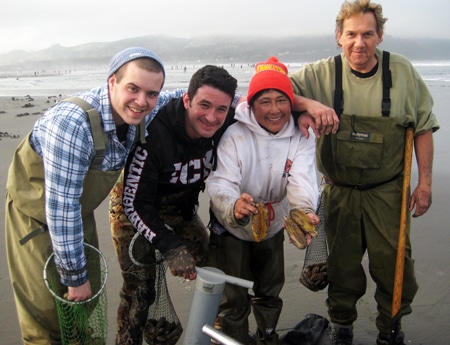Razor Clams in Ocean Runoff

“Never Give Up.” He Always Gets His Clam!

You can’t dig a razor clam you don’t see… and the easiest way to start clamming is by finding razor clams shows in the beaches hard wet sand. The second way is to pound in the surf one inch to one foot under the incoming tide, looking for razor clam shows to open and shut for a few seconds. But most people aren’t aware of the third way; which is finding razor clam shows when the ocean runoff dissipates, leaving a quarter inch, to 1/16 of an inch of water running back towards the Ocean. When this happens (with some patients) all you have to do is pick a spot and keep a watchfully eye for any anomalies in the sand.
When clams feed, move or spit, you will see disruptions in the sand, only for a few seconds though, before the water covers the hole. So watch closely, and you’ll be rewarded. The more ways you know how to find Razor Clam shows the more likely you will limit out. So be patient when you are out there, if one approach doesn’t work, try another.
Disclaimer
During certain times of the year, marine toxins, produced by some species of diatoms (algae) are taken in by shellfish. When ingested, these toxins can cause illness and in exceedingly high concentrations can be fatal to humans. So, for that reason clamming during high biotoxin times is not allowed. The Oregon Department Fish and Wildlife (ODFW) and Washington Department Fish and Wildlife (WDFW) in cooperation with the Departments of Health (DOH) sample clams on a routine basis. If high toxin levels are detected, clam seasons are delayed or closed. ODFW, WDFW and DOH work extremely hard to provide a safe and fun resource to enjoy for all clammers. Therefore, always contact ODFW or WDFW to check on safety relating to shellfish.